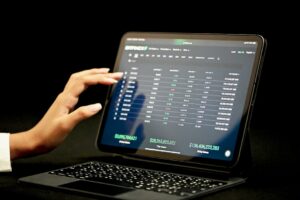The Importance of Pips in Forex Trading Strategies
When it comes to trading in the forex market, understanding the concept of pips is crucial. Pips, short for “percentage in point,” are the smallest unit of measurement in currency trading. They represent the change in value between two currencies and play a vital role in determining profits and losses. In this article, we will explore the importance of pips in forex trading strategies and how traders can utilize this concept to enhance their profitability.
The Definition of a Pip
Before we delve into the significance of pips, it is essential to understand what they represent. In forex trading, a pip is the fourth decimal place in a currency pair’s exchange rate. For instance, if the EUR/USD pair moves from 1.2500 to 1.2501, it has experienced a one-pip movement. Similarly, if the USD/JPY pair moves from 110.00 to 110.01, it has also moved by one pip. However, it is worth noting that some currency pairs, such as the Japanese Yen pairs, are quoted to two decimal places, making the third decimal place the pip.
Calculating Profits and Losses
Pips are crucial in determining the profits and losses in forex trading. They serve as the basis for calculating the value of a position and the potential gains or losses. To calculate the profit or loss in a trade, traders need to know the number of pips gained or lost and the size of the position.
For example, let’s say a trader buys 1 lot (100,000 units) of the EUR/USD pair at 1.2500 and sells it at 1.2550. The trade has gained 50 pips. If the trader’s account currency is in USD, the profit can be calculated by multiplying the number of pips gained (50) by the value of each pip. In this case, if the trader’s account currency is USD, and the exchange rate of the EUR/USD is 1.2550, the value of each pip is $10 ($100,000 x 0.0001).
Therefore, the profit in this trade would be $500 (50 pips x $10 per pip). Conversely, if the trade had lost 50 pips, the trader would have incurred a loss of $500.
Risk Management and Stop Loss Orders
Pips are also crucial in implementing effective risk management strategies. One of the most common risk management tools used by traders is the stop loss order. A stop loss order is a predetermined level at which a trader exits a losing trade to limit potential losses.
The distance between the entry point and the stop loss level is typically measured in pips. Traders set their stop loss orders based on their risk tolerance, trading strategy, and market conditions. By setting a stop loss order at a specific pip level, traders can control the amount they are willing to risk in a trade.
For instance, if a trader enters a long position in the EUR/USD pair at 1.2500 and sets the stop loss order at 1.2450, the stop loss level is 50 pips away from the entry point. If the trade moves against the trader and reaches the stop loss level, the trade is automatically closed, limiting the potential loss to 50 pips.
Pips and Forex Trading Strategies
Understanding the concept of pips is vital for developing and implementing effective forex trading strategies. Different trading strategies require different levels of accuracy and profit targets. Some strategies may aim for small gains with tight stop losses, while others may aim for larger gains with wider stop losses.
By considering the average pip movement in a currency pair and the desired profit target, traders can optimize their trading strategies. For example, if a trader prefers scalping, a trading style that aims to capture small price movements, they may focus on currency pairs with high liquidity and narrow spreads to minimize costs and maximize profits per pip movement.
Conclusion
In conclusion, pips play a crucial role in forex trading strategies. They determine the value of a position, calculate profits and losses, and help traders implement effective risk management strategies. By understanding the concept of pips and incorporating them into their trading strategies, traders can enhance their profitability and make informed trading decisions. It is essential for traders to continuously monitor and adapt their strategies based on market conditions and the desired profit targets to stay ahead in the dynamic forex market.





